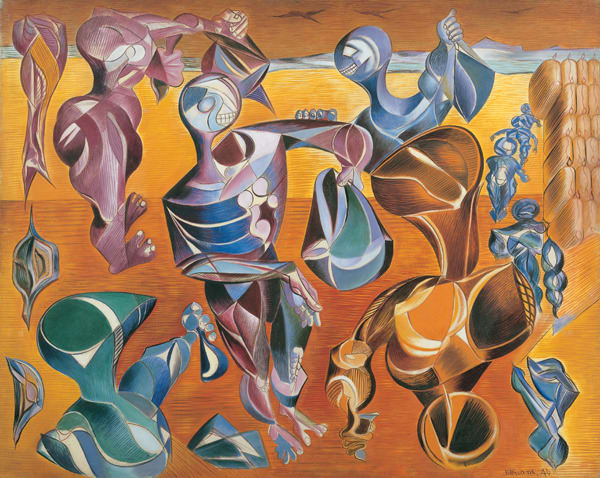Provenance
Artist EstateExhibitions
Cecil Higgins Museum, Bedford, Three Modern Painters, March - April 1955, no.10.Tate Gallery, London, The Political Paintings of Merlyn Evans, March - June 1985, no. 15.
National Museum of Wales, Cardiff, and Glasgow Museum and Art Gallery, Merlyn Evans 1910-1973, 1974, no. 26.
The Tate Gallery, London "The Political Paintings of Merlyn Evans" Mar-Jun 1985, no.15
Literature
Ex-Studio: Artists/Estates, Jonathan Clark Fine Art, 2009, illustrated p.34Mel Gooding, Merlyn Evans, Thames & Hudson, 2004, illustrated p.64/65
From today's viewpoint, the painting is a startlingly modern image, and as a statement, as powerful as when it was painted over 80 years ago. In "The Looters," Evans presents a scene of destruction and disorder, with figures scavenging through the ruins of a bombed-out city. The composition is dynamic and chaotic, with broken buildings and rubble strewn across the landscape, conveying a sense of devastation and desolation.
The figures in the painting are depicted with a sense of urgency and desperation, as they search for valuables amidst the wreckage. Their faces are twisted in anguish or determination, reflecting the harsh realities of war and its impact on ordinary people. Evans' brushwork is bold and gestural, capturing the energy and movement of the scene with a raw and visceral intensity. His use of colour is equally dramatic, with dark, somber tones dominating the palette, adding to the sense of gloom and despair.
